Onagawa was already in decline when it was obliterated in 2011 by the Tohoku tsunami. Can it both rebuild and rejuvenate itself?
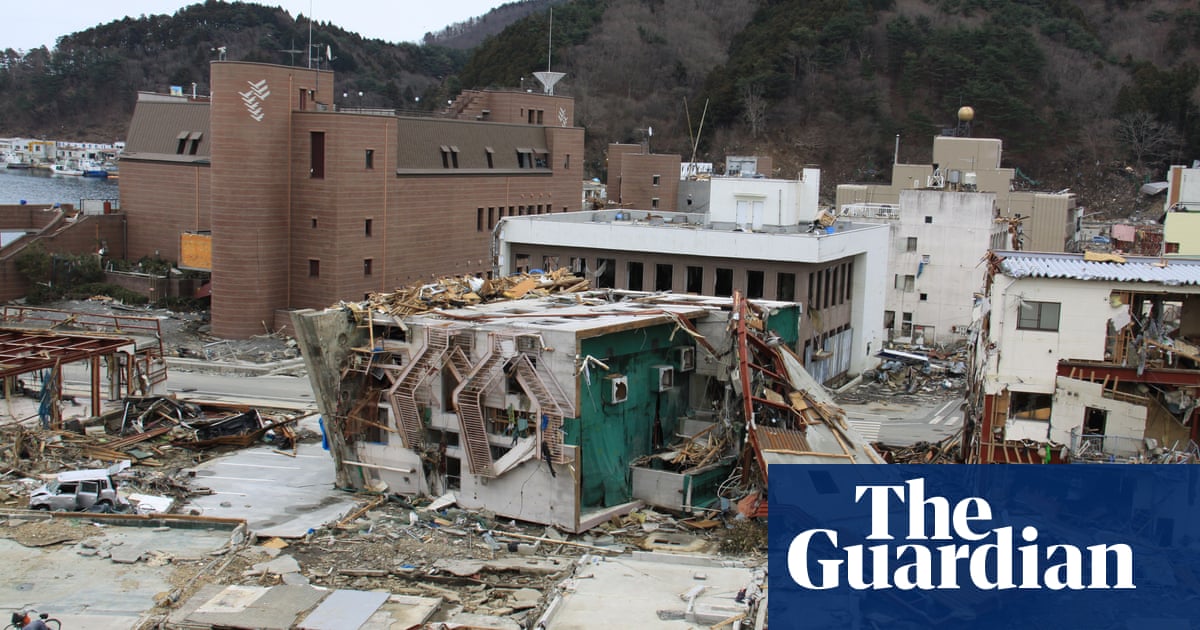
On the shore of eastern Japan a wrecked police station lies on its side, ripped from the ground by the tsunami that devastated the country in 2011.
We are going to keep that building as a reminder of the disaster, says Yoshinori Taura, assistant director of the town of Onagawas recovery promotion division. To make sure the memories are passed to the next generation.
This is about more than sentiment. Onagawa was obliterated by the tsunami; as it builds a new future, the ruined police station will be a daily reminder to run to high ground whenever the tsunami siren sounds.
But the reconstruction is about more than keeping the town safe from natural disasters. The municipality is also trying to find a way to build a thriving, bustling community despite massive population decline. The tsunami only accelerated Onagawas precipitous shrinking, which is now the fastest of any of the countrys municipalities: between 1965 and 2011, the population halved, to 10,000. It has now dropped to around 6,500.
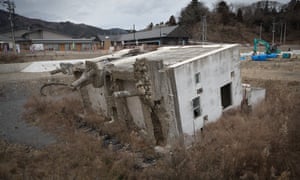
How could the town not merely rebuild after the worst disaster in Japan since the atomic bombings, but somehow also stay active and bustling?
The solution Onagawa lit upon is bold: a near-total ban on any non-residential facilities in any of the housing settlements. In effect, Onagawa is forcing people to come into the town centre to do anything to work, shop, go to school or use public services. Onagawa has outlawed sprawl.
The aim is to build what the municipality calls a bustling centre in the commercial district in front of the new railway station. The idea is that even if the population declines, the town centre will still be buzzing.
This town planning takes into account the population decrease, says Taura. By having these facilities in the centre of town we hope that we will be able to attract a new energy and a new vibe.
The tsunami triggered by the Great East Japan Earthquake the largest in Japanese history struck on 11 March 2011. More than 560 sq km of land was flooded, 22,000 people died and hundreds of thousands were evacuated. Onagawa, in Miyagi prefecture, was hit harder than any other municipality: the water, funnelled towards the shore by the surrounding bay, was 14 metres high when it enveloped the town, killing 827 people and destroying two-thirds of the buildings.

Japan is dedicating vast resources, funded by higher income tax, to recovering from the earthquake, the tsunami and the accompanying nuclear disaster in Fukushima. Over 10 years, Onagawa will have received 243bn yen (1.7bn) in state support.
The citizens, struggling with bereavement, loss and dislocation in the aftermath of the tsunami, could have been forgiven for leaving decisions about how to rebuild to officials. They did the opposite: hundreds of residents attended what were sometimes intense public meetings to discuss the future.
The mayor, Yoshiaki Suda, says: Despite having lost communities and families, each person has to come face-to-face with their situation, and I think that may be why they had so much interest in how the town would be rebuilt.
The key controversy was whether to rebuild the 14 surrounding villages, or to cluster new homes in the original town centre. The mayor at the time, Nobutaka Azumi, favoured consolidation, but he was opposed by older residents and soon replaced by Suda. Now the villages will be rebuilt but the services will be concentrated in one spot, forcing everyone to come to Onagawa to use them.
There were other goals. With the towns success dependent on attracting and keeping young people, the perception among local firms that the older generation of business leaders was driving the recovery was a problem. The leaders of the business community said to everyone over 60: Dont get too much involved, says Hideki Doi, who leads public-private partnerships for the town.
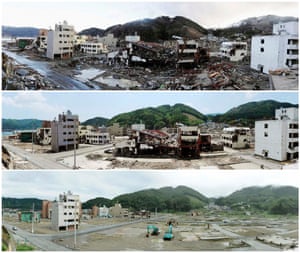
Keen to avoid turning Onagawa into a fort, the rebuilding programme involves zoning the town to manage the risks of a future tsunami. The area around the waterfront is restricted to a park the fallen police station will be the centrepiece of a memorial and to buildings essential to the fishing industry. Behind that, protected by a road built high enough to act as a barrier to a relatively low level 1 tsunami (about four metres high in Onagawa), is the commercial district centred .
The new residential areas are now cut into the mountainsides, just high enough to be safe from a level 2 tsunami, around 17 metres high in Onagawa.
Our town is surrounded by the ocean, mountains and forest, so there is very little flat land, so we are cutting into the mountains and creating it, says Taura.
The residential areas will be high enough to be safe from a large tsunami. The lower area will only be for commercial and the station. We have made sure that housing cannot be built on this area.
All around the bay, a massive construction operation is shoring up the hillsides with concrete reinforcements, cutting and levelling the land and laying roads connecting the new communities with the town. Millions of tonnes of earth have been moved. Development is almost complete. Most survivors have been rehoused, with about 40 families still in temporary accommodation.
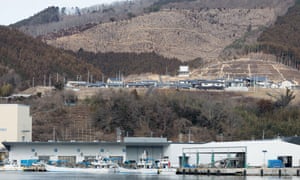
But it remains to be seen if the anti-sprawl effort will succeed in focusing energy on the now-smaller town. Like the UK, Japan is struggling with shuttered high streets as businesses close. Before the tsunami, much of Onagawa town centre was in private hands, so the municipality had limited ability to address the problem. But now it has taken ownership of the land, and a community development company owns the shops and manages the tenants. Supported by grants, around 40 shops are already occupied. They give the town a bohemian air: there is a guitar manufacturer, a soap company, a tile factory, coffee shops, artisan food outlets and various festivals.
The way forward is far from clear, however. A third of businesses that existed before the tsunami have not survived. Despite investment, determination, optimism and creativity, there is still fear that population decline could prove too powerful a foe.
How to make this town successful for the future is still the question we struggle with, says the mayor. We hope that the way we rebuild the town will serve as a model to deal with how to bring people back to the community and stay in the community. Of course it is important to build infrastructure, but what is most important is that the citizens have an energy and excitement to come together to build the town.
-
Travel for this article was partly supported by Japans Council of Local Authorities for International Relations
Follow Guardian Cities on Twitter, Facebook and Instagram to join the discussion, catch up on our best stories or sign up for our weekly newsletter
Read more: https://www.theguardian.com/cities/2019/apr/17/the-town-that-outlawed-sprawl-onagawa-tsunami-rebuild

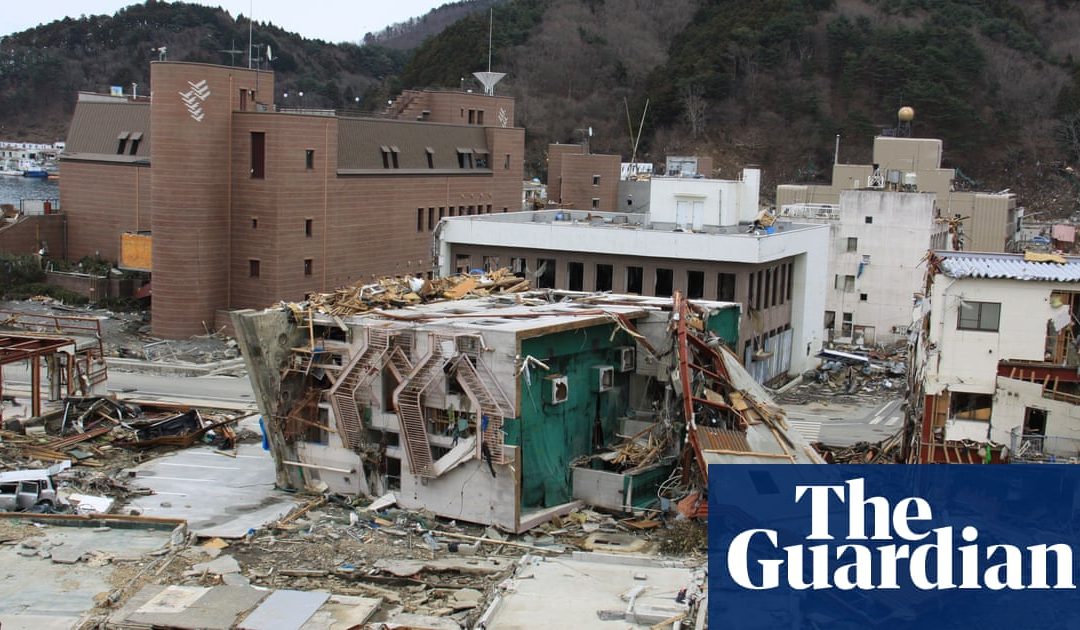
Recent Comments